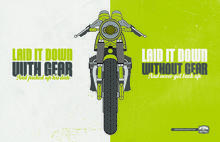Wear Protective Gear
The Right Gear Could Save Your Life
In 2015, 62 percent of riders killed in Colorado were not wearing a helmet or were wearing it incorrectly.
The National Highway Traffic Safety Administration (NHTSA) estimates that helmets are 37 percent effective in preventing fatal injuries, meaning at least 34 Colorado riders in 2015 could have been saved if they had been wearing helmets.
What to Wear
Before you hit the road, make sure you have the proper equipment to keep you and your passengers safe and legal.
Helmets
Helmets are the most important equipment you can wear.
While there's no Colorado helmet law for adult motorcycle operators, the law does require operators younger than 18-and their passengers younger than 18—to wear one.
Make sure your helmet is USDOT approved, meeting rigorous safety standards.
View the DOT testing standards here.
View the Snell testing standards here.
Your helmet should be comfortable and fit properly:
Your helmet should fit snugly and comfortably on your head. It should not shift around or slide off your head.
It should rest tightly against your forehead, you should not be able to wedge your thumb between the helmet and your forehead.
The chin strap should not cinch your neck.
Along with clear vertical vision, you should have 100 percent vision to your left and right. (Motorcycle helmet manufacturers are required by law to account for lateral vision.)
If you wear glasses while riding, make sure the helmet fits properly over and around them.
Eye Protection
Colorado law requires that operators and passengers wear eye protection.
Eyewear is essential for protecting you from road debris and the inevitable bugs or insects.
Choose goggles or eyeglasses with lenses made from safety glass or plastic.
Goggles are to be worn around the outside of the helmet.
Clothing
Don't forget to wear the proper clothing to protect your body from debris encountered on roadways and against unexpected changes in the weather in the event of a crash.
Gear should include full-fingered gloves, over-the-ankle boots, long pants and a durable long-sleeved jacket.
Bright colors are best to make you more visible to other drivers.


